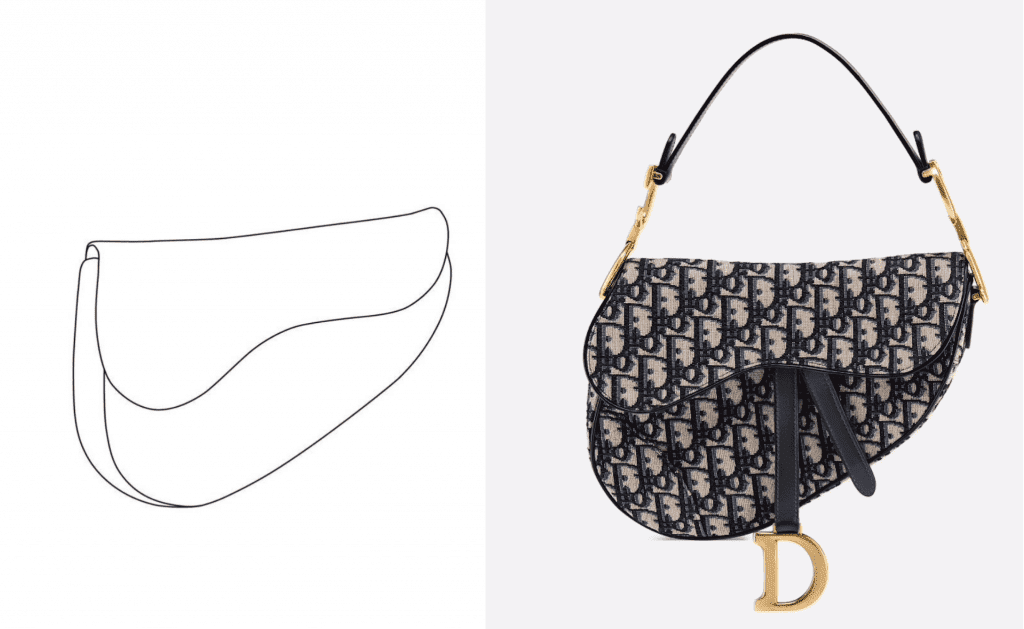“The Saddle bag is one of those emblematic pieces that always manages to remain contemporary,” Christian Dior creative director Maria Grazia Chuiri said in connection with her decision to reintroduce the handbag as part of Dior’s Autumn/Winter 2018 collection. “Since taking the creative helm of [the 73-year old brand] in 2016, Chiuri has reinvented the aesthetic of the house while paying homage to her predecessors,” Vogue noted at the time. “No product illustrates this more than the Saddle bag,” the interestingly-shaped handbag first introduced by John Galliano almost 20 years ago.
First conceived of in 1999 by Galliano, who was the chief creative of the LVMH Moët Hennessy Louis Vuitton-owned brand at the time, and debuted on the runway for Spring/Summer 2000, the bag swiftly skyrocketed to “it” status, helping Dior to triple its revenues between the late 1990s and 2005. Almost two decades later, in 2018, the Paris-based fashion house reissued the staple handbag style, with Chuiri showing saddle bags in 1970s-inspired patchwork prints and intricate beading iterations, complete with its easily-identifiable “D” charm, while no shortage were covered in Dior’s famed monogram pattern.
But even without a stylized capital “D” charm hanging from the front of the bag and in lieu of Dior’s oblique pattern, which was created in 1967 by Marc Bohan (who was the house’s creative director from 1961 to 1989), two well-known trademarks that indicate the source of the products upon which they appear, the shape of the bag, alone, serves as an indication of Dior in the minds of consumers. That is what the brand is more-or-less claiming in connection with the trade dress application that it filed last month with the U.S. Patent and Trademark Office (“USPTO”) for the “design of a tote.”
A subset of trademark law, trade dress extends to the overall look of a product, including the configuration of that product and/or its shape, as long as it serves to identify and distinguish the source of the product in much the same way as a brand name or logo does.

In order to establish trade dress rights (and to receive a registration from the USPTO), the holder of a purported trade dress needs to show that the product design is capable of alerting consumers of a single source. This is traditionally established by way of a showing of acquired distinctiveness or secondary meaning, which generally consists of a combination of unsolicited media coverage of the specific trade dress-bearing product; advertising expenditures by the rights holder in connection with the trade dress-bearing product; sales for the trade dress-bearing product; the length, degree, and exclusivity of use of the trade dress; and attempts by others to copy the trade dress, among other things.
For Dior, establishing secondary meaning should not be too much of an uphill battle given that it has been selling and/or marketing its saddle bag (i.e., using the trade dress at hand) at least somewhat consistently since 1999. On the advertising front, Dior rather famously enlisted scores of fashion’s biggest influencers to help reintroduce the bag back in 2018, resulting in what Bloomberg called a “global Instagram blitz” back at the time, with heavily-followed (and certainly compensated) figures “posting images modeling the $2,000-plus bags on the same day that Dior released its own campaigns, with models posing against vintage cars on the streets of Paris.”
At the same time, “Vogue and Marie Claire published dreamy videos from Dior’s ateliers of the bags being hammered into shape on wooden molds,” Bloomberg wrote. Meanwhile, “on the Chinese social network Weibo, Dior took a more literal approach, posting a clip of Hong Kong fashion star Elle Lee posing as an elated client in front of a shop mirror.”
The largescale advertising campaign, which sent consumer searches on fashion discovery platform Lyst up by almost 1,000 percent, prompted no shortage of third-party media attention, following from prime placements of the bag over the years in fashion publications worldwide, as well as in television shows, such as Sex and the City. Add to that, the seemingly countless attempts by third-parties to copy the bag and sell it for cheap.
In other words, the design of Dior’s saddle bag is likely to join the likes of Hermès’ Birkin and Kelly bags and Fendi’s baguette bag, among others, which are the subject of trade dress resignations in the U.S., thereby, enabling the brand to add one more layer of legal protection to its enduring “it” bag (it already maintains protections for its “D” charm and monogram print), one of its key revenue-driving assets.











